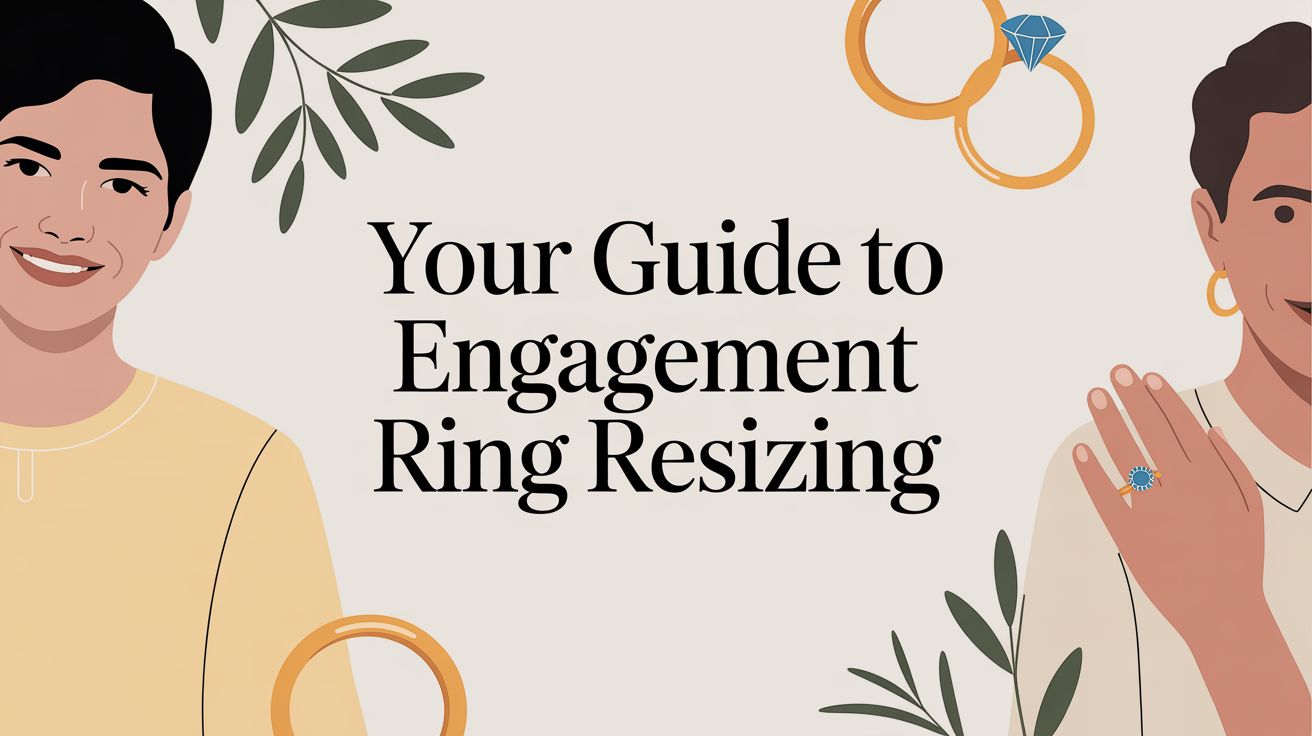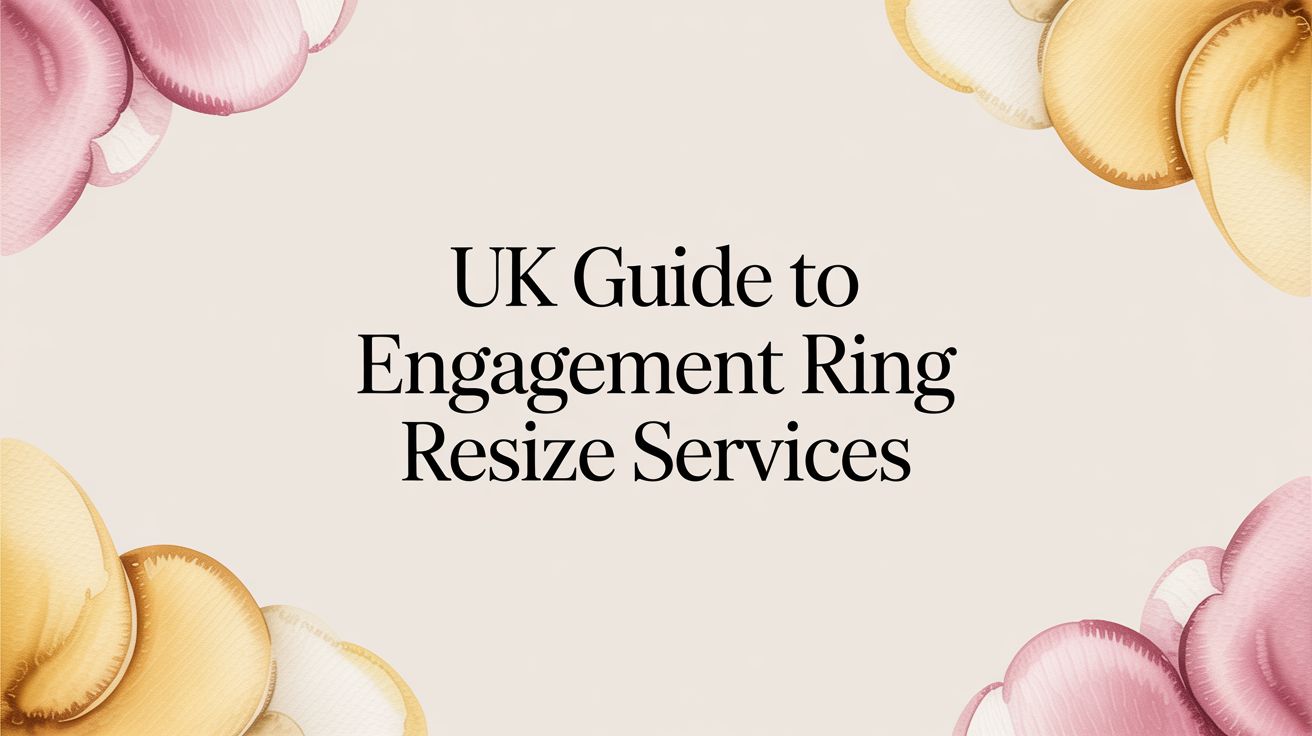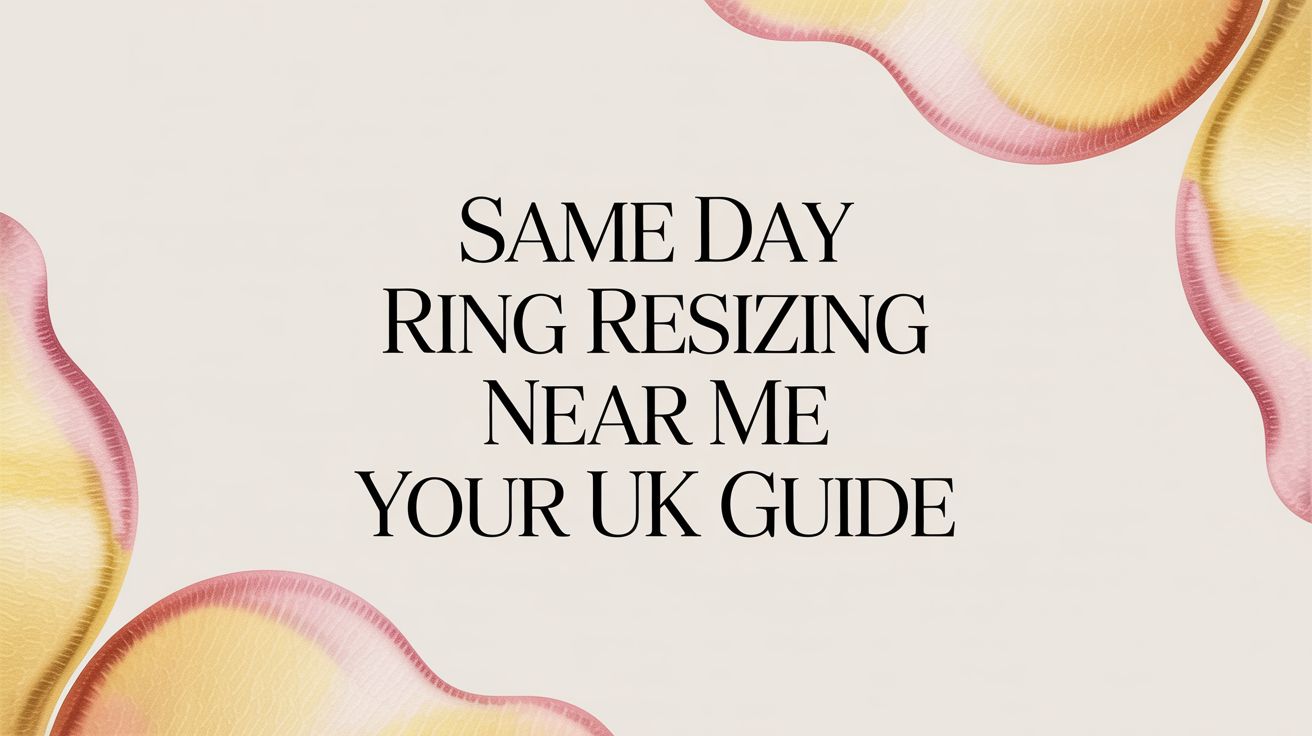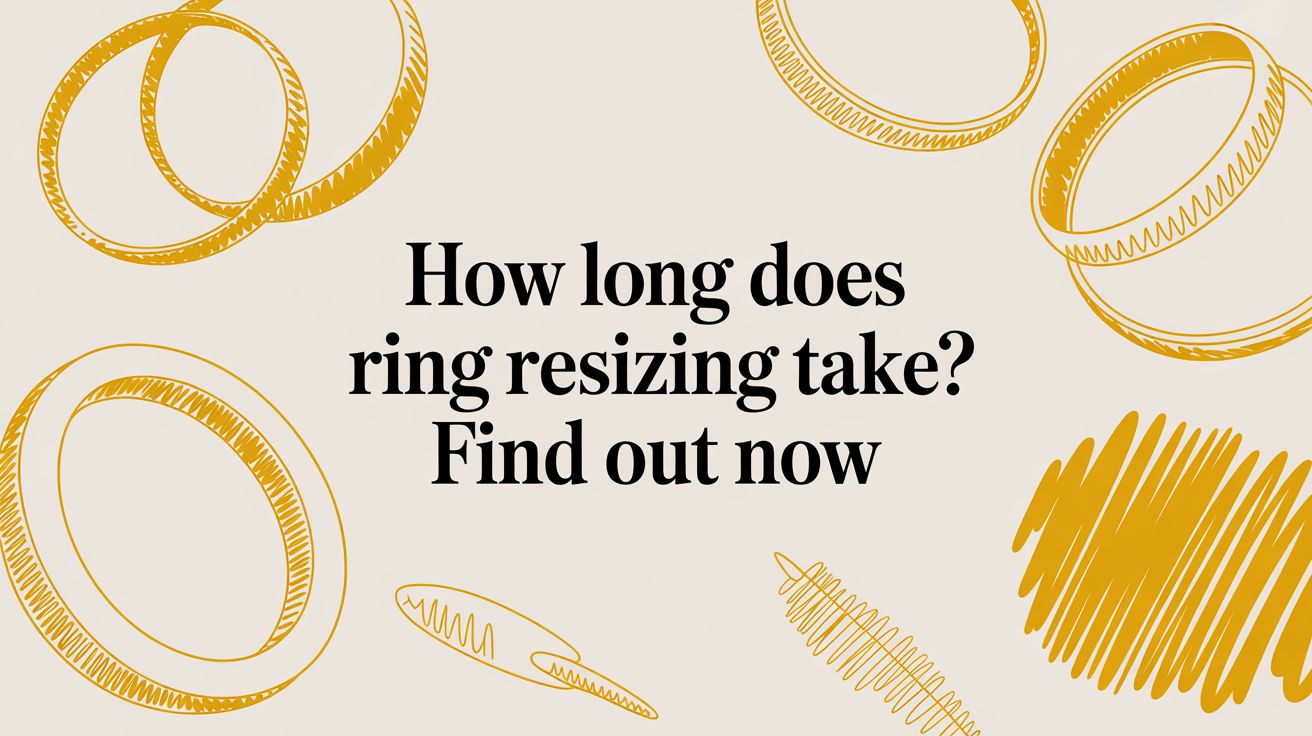A beautiful ring should feel like a part of you, not something you're constantly worried about losing. The perfect fit is snug enough that it won't slip off, but loose enough to slide over your knuckle without a major struggle. It’s a delicate balance, but getting it right means you can wear your cherished jewellery with comfort and confidence.
Is Your Ring a Perfect Fit?
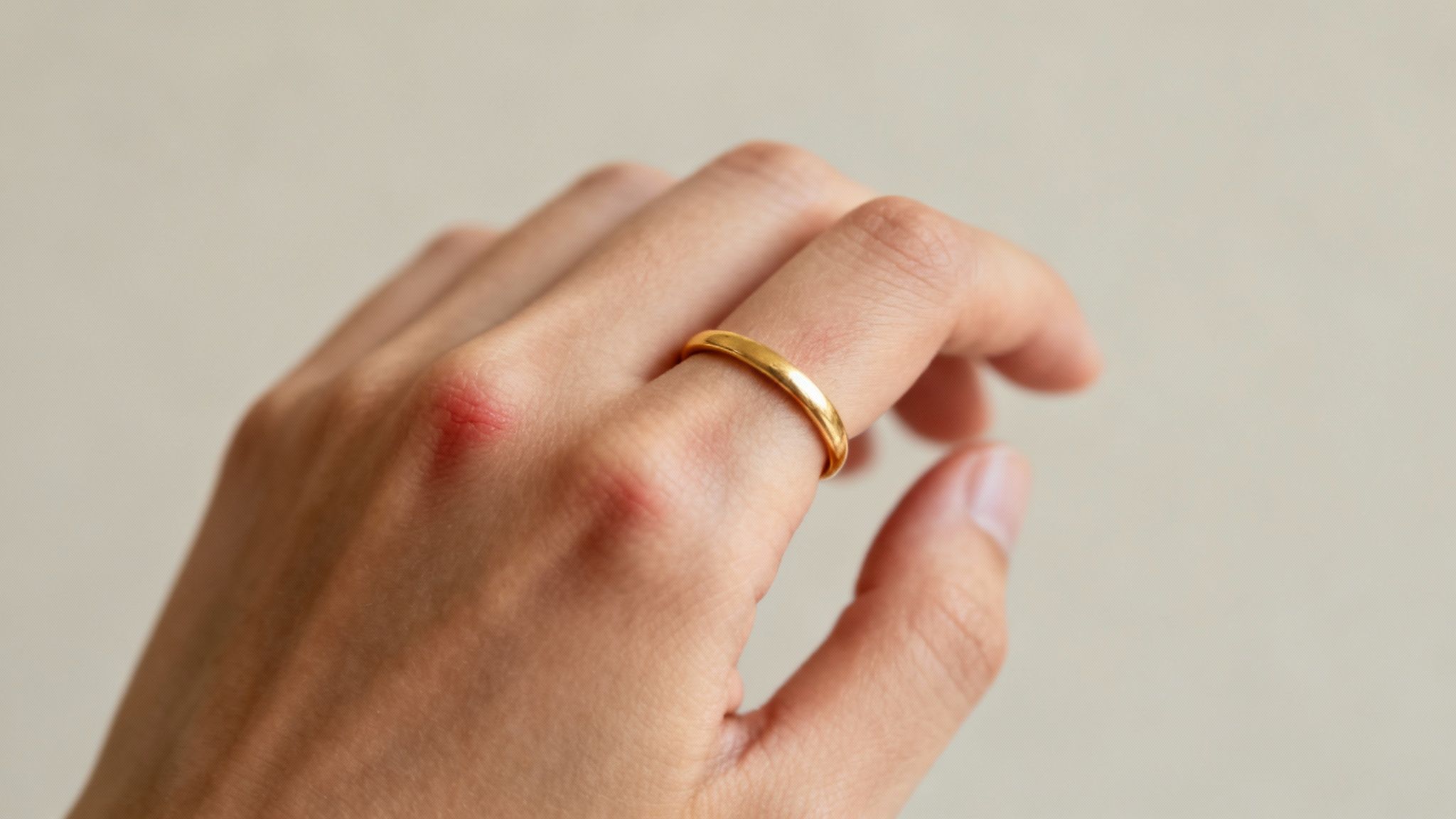
Before you book a resize, it’s worth confirming that an adjustment is genuinely needed. A fit that feels a bit off one day might feel absolutely perfect the next. Recognising the real signs of an incorrect size is the first step toward making the right call.
Telltale Signs of a Poor Fit
So, how can you be sure? Look out for these classic indicators:
- Difficulty Removing: If taking your ring off is a battle, leaving behind an indent or a red mark, it’s definitely too tight. A well-fitting ring should come off with just a gentle twist.
- Constant Spinning: Is your ring always turning, forcing you to readjust it? A ring that spins or slides to the side is too loose. The main stone or feature should stay centred on top of your finger without constant fuss.
- Knuckle Resistance: The ring should have a little resistance going over your knuckle—that’s what keeps it secure. But if it’s so loose that it could fly off while you're washing your hands, it’s a problem waiting to happen.
Natural Fluctuations in Finger Size
Here’s something many people overlook: your fingers aren’t a fixed size. They actually swell and shrink throughout the day, and even with the changing seasons. This is a crucial detail to consider before you commit to a resize.
A common mistake is getting a ring resized based on how it fits on one specific day. It's far better to observe the fit over a week to understand your finger's natural size range and find a comfortable average.
Things like temperature, what you’ve eaten, and even the time of day all have an effect. Your fingers tend to swell in warm weather or after a salty meal and shrink when it’s cold. Here in the UK, where resizing is a frequent request, many people find their perfect fit changes between summer and winter.
In fact, with rings making up 36.26% of jewellery product revenue in the UK for 2024, it’s clear they are a dominant force in the market. This highlights just how high ownership is, and with it, the demand for modifications. You can explore more data on UK jewellery market trends to see how common this really is.
The Professional Ring Resizing Process
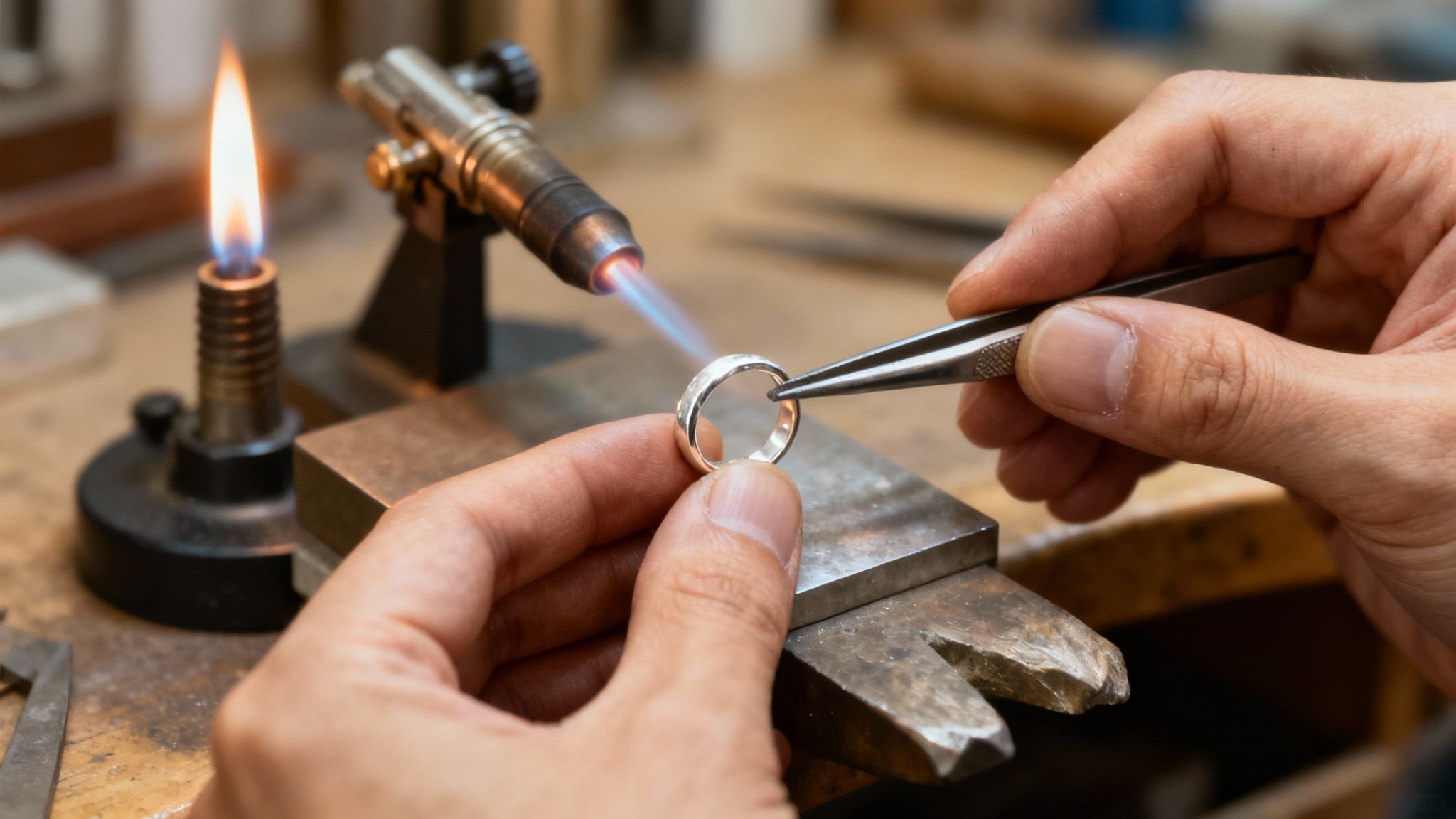
Handing over a treasured ring takes a bit of trust. It helps to understand exactly what happens behind the workshop door, where skill and precision come together to give your piece a perfect fit. The techniques we use depend entirely on one simple thing: does it need to get smaller or larger?
Making a Ring Smaller
To make a ring smaller, a jeweller performs a delicate operation. We carefully measure and cut out a small piece of the band, almost always from the bottom to protect any hallmarks or engravings.
The two ends are then meticulously shaped to form a perfect join before being soldered shut with a perfectly matched metal alloy. The final steps are all about refinement—filing, sanding, and polishing the seam until it’s completely invisible. The goal is simple: to return the ring to you looking as if it was never touched.
Making a Ring Larger
When a ring is too tight, we have two main options. For a tiny adjustment, usually up to half a size, we can sometimes carefully stretch the band using a specialised tool. It’s a quick and effective method for plain bands.
Stretching isn't right for every ring, though. It can weaken the settings on rings with inset stones, so for most jobs, we add metal. This is the more robust and common method. A jeweller cuts the shank and expertly inserts a new piece of matching precious metal—whether it's gold, silver, or platinum.
Key Takeaway: The mark of a quality resize is its invisibility. A skilled jeweller ensures the added metal is a perfect match in colour and carat, creating a seamless join that’s strong enough for daily wear.
This new piece is then soldered into place on both sides. Just like with sizing down, the final stage is a painstaking process of filing and polishing to restore the ring's flawless finish and structural integrity.
If you’re in a hurry, it’s always worth asking about a ring resizing while you wait service, as many workshops can handle straightforward jobs very efficiently.
When a Ring Simply Can't Be Resized
It’s a tough reality, but resizing isn't always an option. While it’s a common fix, some designs and materials just won’t stand up to being cut and soldered without compromising their structure or beauty. Knowing these limits upfront can save a lot of disappointment.
Certain designs are immediate red flags. Take an eternity band, for instance—with gemstones wrapping the entire way around. Cutting out or adding a section completely breaks that seamless pattern of stones, making an invisible resize practically impossible. Intricate filigree or heavily engraved bands are another challenge; the detailed patterns get obliterated at the solder point, ruining the ring's artistry.
Then there's the metal itself. This is where many modern metals just don't play ball.
Metals That Resist Resizing
Some of today's popular metals are notoriously difficult, if not impossible, to resize with traditional workshop methods.
- Tungsten Carbide and Titanium: These metals are incredibly hard but also brittle. Their melting points are so high that soldering is a huge challenge, and just trying to cut them can cause the ring to shatter.
- Stainless Steel: It’s durable, sure, but steel is far harder to work with than precious metals. Most jewellers simply don’t have the specialised gear needed to handle it properly.
- Rose Gold: This one is tricky. It can be resized, but its unique copper alloy makes it prone to cracking when heated. It takes an exceptionally skilled hand to get it right without causing damage.
This is a conversation you absolutely must have with your jeweller. Always ask about the specific risks for your ring’s design and metal. A good professional will be completely upfront about what they can and can’t achieve.
The need for repairs is incredibly common. In fact, an estimated 81.21% of adults in the UK have had to deal with broken jewellery, which shows just how often people run into these exact challenges. You can read more about the UK jewellery repair market to see the bigger picture. If your ring falls into one of these tricky categories, it might be time to look at non-permanent alternatives instead.
Ring Resizing Costs and Timelines in the UK
When it comes to resizing a ring, the two questions that always pop up are "How much will it cost?" and "How long will it take?". There's no single answer, I'm afraid. The final price tag and the time you'll be without your ring depend heavily on a few key things.
At its simplest, making a 9ct gold band a little smaller is often the most straightforward job, usually starting from around £40-£60. But if you need to make a platinum ring larger—a much more involved process that demands more skill and expensive material—you'll likely be looking at a cost upwards of £100.
What Influences The Price?
The complexity of your ring's design is a huge factor. A plain, simple band is one thing, but a ring with delicate shoulder stones or an intricate setting needs a far more careful approach. The jeweller has to make sure every single gem is secure and that the original design isn't compromised, which all adds to the time and labour involved.
It's this level of expert service that underpins the UK's jewellery market, which was valued at roughly £4.5 billion in 2024. With traditional jewellers still handling 86.2% of offline sales, their in-house repair and resizing services are more important than ever. You can read more about the growth of the UK jewellery market to understand current consumer trends.
To give you a clearer picture, here’s a general breakdown of what you might expect to pay.
Estimated Ring Resizing Costs in the UK
| Metal Type | Making Smaller (Removing Metal) | Making Larger (Stretching/Adding Metal) |
|---|---|---|
| Silver | From £35 | From £50 |
| 9ct Gold | From £40 | From £60 |
| 18ct Gold | From £60 | From £80 |
| Platinum | From £75 | From £100 |
Please remember these are just estimates! Intricate designs, multiple stones, or significant size changes will affect the final quote.
How Long Should I Expect to Wait?
The time it takes to get your ring back can vary just as much as the price. A simple job, like sizing down a silver ring, might only take a couple of business days. Some workshops might even offer an express or same-day service if it's a straightforward task.
Naturally, more complex work takes longer. Sizing up a detailed engagement ring or working with a challenging metal like platinum could easily take a week or more. It’s also worth considering the jeweller's workload—periods like Christmas or the run-up to Valentine's Day are always much busier.
My best advice? Always ask for a clear quote and an estimated completion date before you commit. This way, there are no surprises, and you know exactly what to expect.
Not all rings are good candidates for resizing. This handy infographic gives you a quick visual guide.
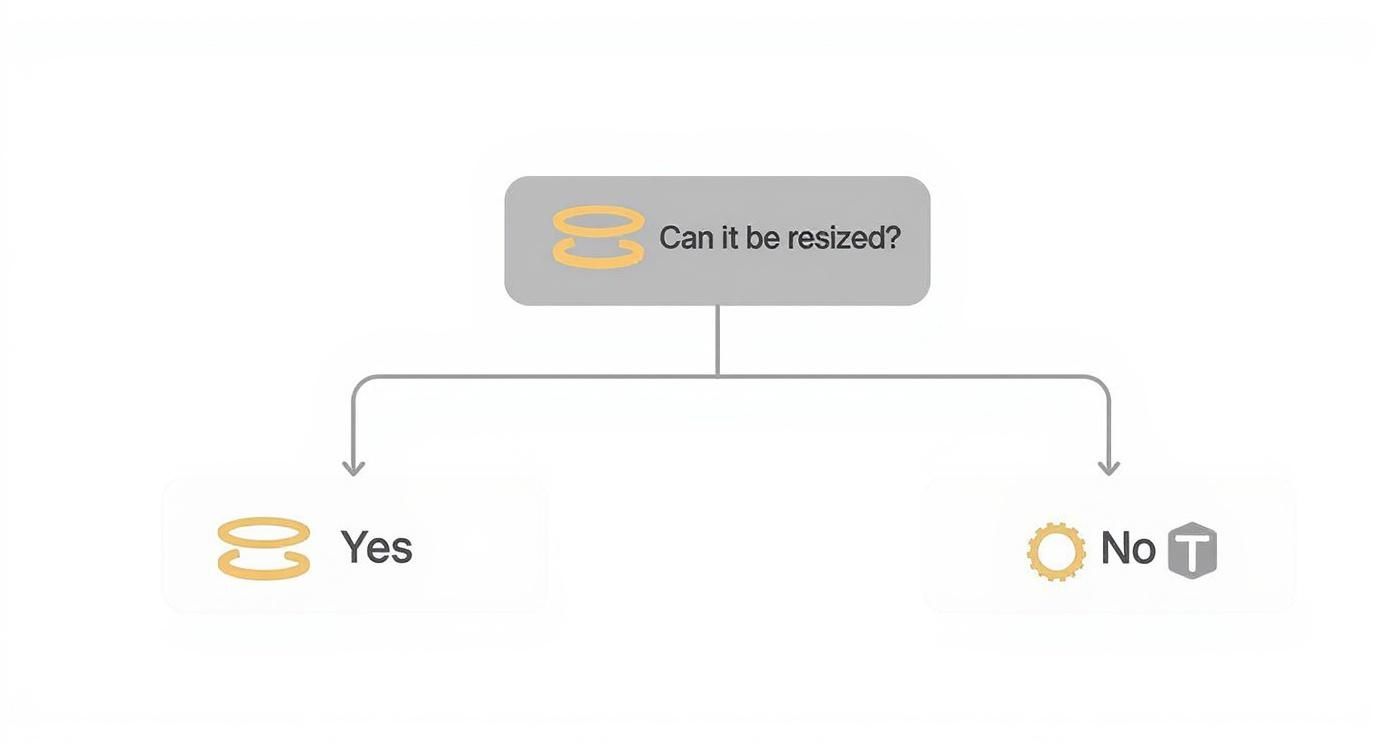
As you can see, plain bands are usually fine, but things like full eternity bands or rings made from very hard metals are often a no-go. For a much more detailed breakdown, have a look at our complete guide on the cost of resizing a ring in the UK.
Smart Alternatives to Permanent Resizing
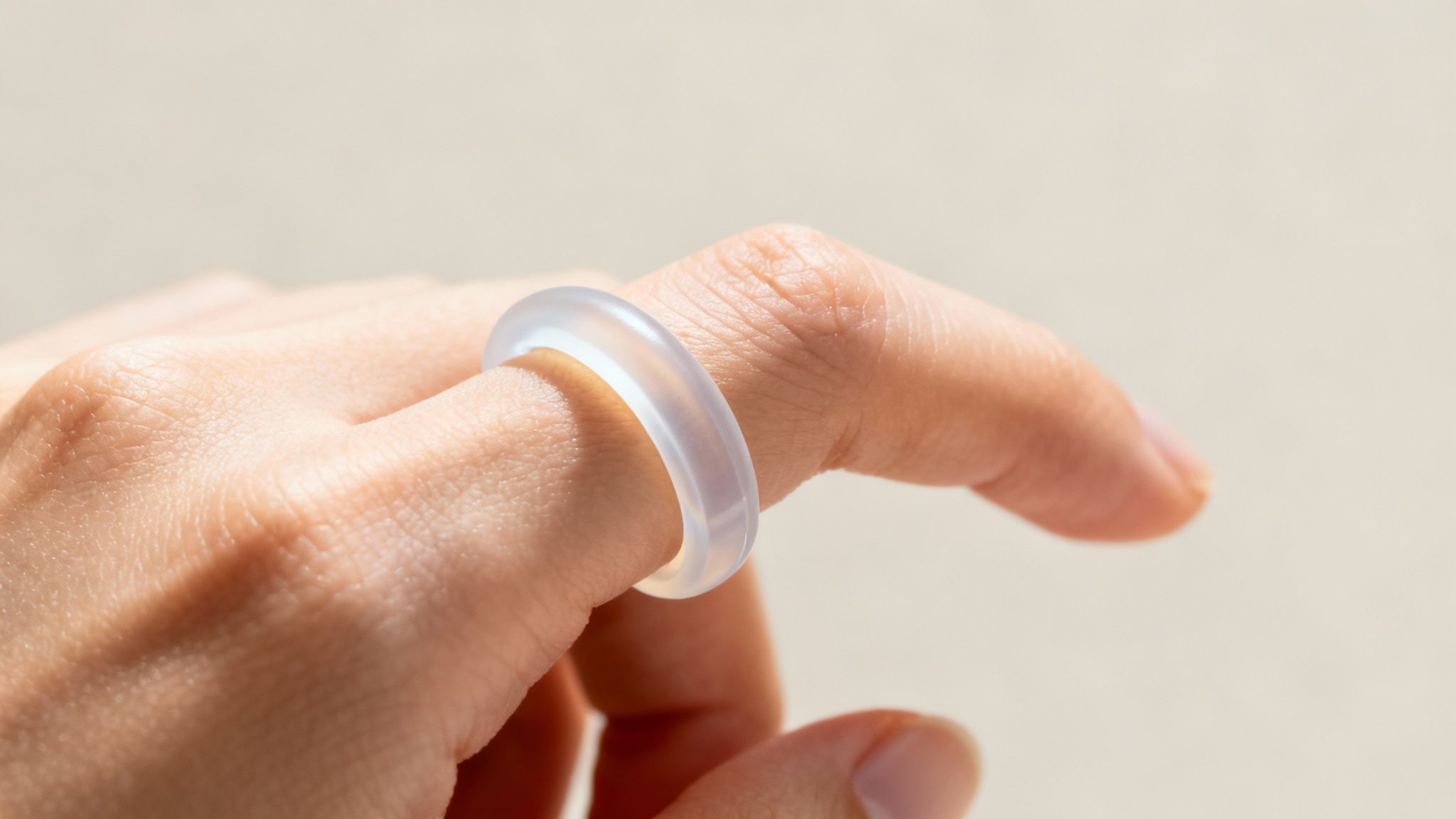
While a professional resize is the definitive long-term solution, it isn't always practical or even necessary. Sometimes, all you need is a quick, temporary fix for a ring that's just a little too loose.
This is where non-permanent solutions come into their own. They're perfect for adjusting the fit without permanently altering the ring itself. Think of rings that only feel loose in colder weather, or perhaps costume jewellery that simply doesn't justify the expense of a professional job. These clever alternatives provide a snugger fit, stopping the ring from spinning on your finger or slipping off entirely.
Quick and Reversible Solutions
For those times when you need an immediate adjustment, there are several brilliant products that can help. Crucially, they are all completely removable and won’t cause any damage to your jewellery.
- Silicone Adjusters: These are typically clear, flexible spirals that you wind around the bottom of the band. They're discreet and surprisingly comfortable, filling the gap between your finger and the ring to create a much more secure fit.
- Ring Guards: A ring guard is usually a small plastic or metal clip that attaches to the inside of the band. It acts like a little wedge, effectively preventing the ring from shifting and spinning around.
- Sizing Beads: For something a bit more semi-permanent, a jeweller can solder two tiny metal beads onto the inner shank. These beads anchor the ring in place without changing its overall size—an excellent choice for top-heavy rings that constantly want to spin.
Crucial Warning: Under no circumstances should you ever attempt to permanently resize a valuable or sentimental ring at home. DIY methods involving pliers, glue, or other tools can cause irreversible damage, shatter stones, and end up costing far more to repair than a professional resizing would have in the first place.
These temporary fixes are fantastic tools, but they have their place. For a precious engagement or wedding ring, they are best used as a stop-gap while you decide on a permanent, professional resizing.
Common Questions About Resizing Your Ring
Getting a ring resized for the first time can bring up a few questions. We've put together answers to the most common queries we hear in our workshop, giving you the final bits of information you need to move forward with confidence.
How Many Times Can a Ring Be Resized?
Most rings can handle being resized two or three times over their lifetime. Every time we work on the metal, it undergoes a small amount of stress, and too many adjustments can start to weaken the band—especially around the solder join.
Rings with intricate settings or a lot of smaller stones are even more sensitive. Before starting any work, a good jeweller will always assess your ring’s integrity and tell you honestly if another resize is a safe bet.
Will Resizing My Ring Devalue It?
When handled by a professional, a resize should be completely invisible and will not devalue your ring. A seamless, perfectly polished finish is the hallmark of a job done right.
However, a poor-quality resize—one with a visible seam, a distorted shape, or a mismatched metal colour—can absolutely reduce its value and appeal. If your ring has important hallmarks, always ask your jeweller how they plan to protect them during the process.
Can I Resize a Ring I Bought Online?
Yes, absolutely. Most local UK jewellers are happy to resize a ring you’ve bought from an online store. The best way forward is to bring it in so we can see it in person.
Your jeweller can measure your finger accurately and inspect the ring’s construction to confirm it can be resized safely. Just be prepared to pay for the service, as it won’t be covered by the original online seller.
How Long Does It Take to Resize a Ring?
The timeline really comes down to the complexity of the ring and how busy the workshop is. A straightforward job, like sizing down a plain gold or silver band, might only take a few days.
On the other hand, a more involved task, like sizing up a platinum engagement ring with delicate side stones, could take a week or even longer. For a deeper dive into all the factors that affect the turnaround, you can learn more about how long ring resizing takes in our detailed guide. It's always a good idea to ask for an estimated completion date when you drop your piece off.
At Opulence Jewellery Services, our Hatton Garden workshop is equipped to handle all your resizing needs with precision and care. Bring your cherished pieces to us for an expert assessment and flawless finish.

